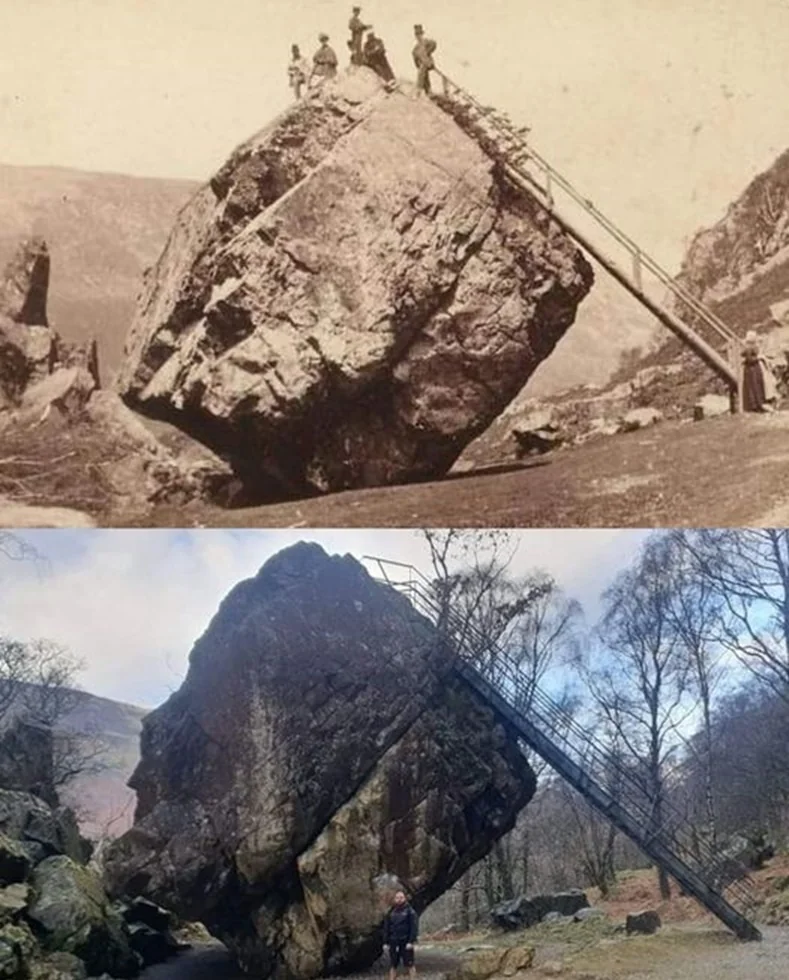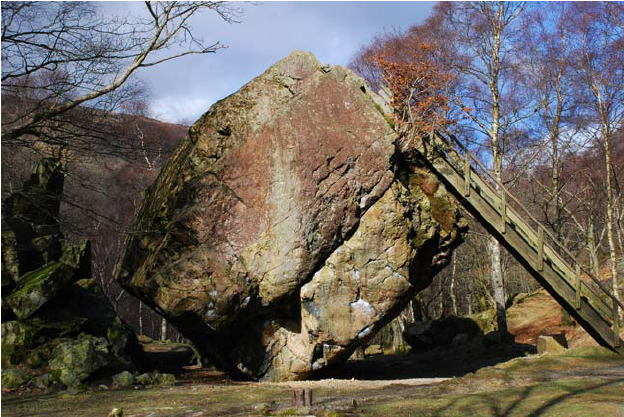Bowder Stone is a massive boulder weighing around 2,000 tons, located in Borrowdale Valley within the Lake District, England. It is not only a natural marvel but also a vivid testament to the power of nature over thousands of years. With its colossal size and distinctive shape, it has attracted the attention of both researchers and tourists for centuries.
How Bowder Stone Was Formed
Bowder Stone was not created in a short period but is the result of a rockfall that occurred approximately 10,000 years ago. As the glaciers of the Ice Age began to retreat, they left behind massive rocks scattered throughout the area. Bowder Stone is one of these rocks, transported and deposited in Borrowdale Valley by the melting glaciers. This geological formation has created a unique stone structure that has stood the test of time and contributed to a captivating natural landscape.

Bowder Stone in the History of Tourism
Due to its imposing presence and prominence, Bowder Stone quickly became a popular destination in the Lake District. In the 18th century, as tourism began to develop, a wooden ladder was erected to allow visitors to climb to the top of the stone and take in the stunning views of the surrounding landscape. Remarkably, this ladder still exists today as a historical relic of the region’s tourism history. Climbing this stone not only offers an exciting physical experience but also provides an opportunity for visitors to admire the grandeur of Lake District from above.
Geographical and Geological Significance
Bowder Stone is not only a visual wonder but also a remarkable geological feature. Its existence is evidence of the long-lasting effects of glaciation on the landscape of the Lake District. Bowder Stone serves as a prime example of how natural forces such as glaciers, erosion, and rockfalls have shaped the terrain over time, creating unique geographical landmarks.

Bowder Stone in a Larger Context
Lake District is famous not only for Bowder Stone but also as a UNESCO World Heritage site known for its stunning mountains, lakes, and valleys. Preserving Bowder Stone along with its surrounding landscape plays a key role in highlighting the cultural, historical, and ecological value of the region. Though Bowder Stone may be just one feature in the larger picture, it contributes significantly to the richness and diversity of nature in this remarkable area.
Conclusion
Bowder Stone is not just a giant rock in the heart of Borrowdale Valley, but an integral part of the long story of Lake District. With its formation history spanning thousands of years, the combination of raw nature and human ingenuity through the historic ladder, Bowder Stone continues to captivate those who seek to explore and learn about the natural beauty. It stands as a living testament to the wonders of nature and the connection between humans and the earth through time.
